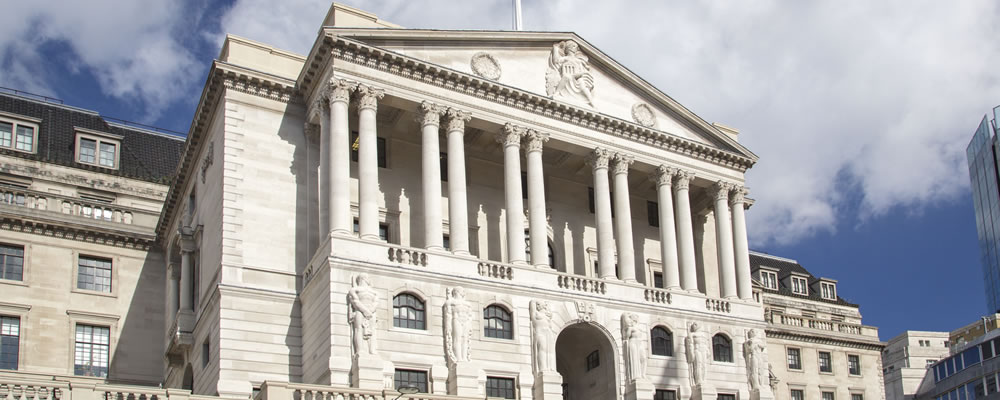- Pound Euro Exchange Rate Hits 1.10 – Lowest levels since 2011
- Bank of England (BoE) Leaves Rates Frozen – Dovish tone spooks GBP traders
- GBP Forecast: UK Trade Balance Next Week – Eco-calendar comparatively quiet
- EUR Forecast: German Data in Focus – Trade data and inflation next week
Updated 16:46 BST 04/08/2017:
Pound Euro Exchange Rate Emerges from Lowest Level Since 2010
Early on Friday afternoon, the Pound Euro exchange rate briefly touched on a low of 1.1046.
This marked a new post-referendum low for the pair and was the lowest level since 2010 – a 7-year-low.
The pair recovered slightly from these lows before the end of the day, as the Euro was weakened by a strengthening US Dollar (USD).
Despite this, the pair remained near the low region of 1.10 after another week of poor Sterling performance and concerns on Britain’s outlook.
[Previously updated 12:54 BST 04/08/2018]
GBP EUR continued to trend flatly near its worse levels since 2011 on Friday morning.
The Pound Euro exchange rate was little-affected by the day’s Eurozone ecostats and trended in the region of 1.1068.
Germany’s June factory orders report was forecast to drop to 0.5% month-on-month, but instead came in at 1%. The previous figure was revised higher, from 1% to 1.1%.
Germany’s July construction PMI was also solid, rising from 55.1 to 55.8. However, the Eurozone’s July retail PMI slipped from 53.2 to just 51.
[Published 06:00 BST 04/08/2017]
August’s Bank of England (BoE) policy decision was disappointing to Pound Euro exchange rate traders. A dovish tone from BoE Governor Mark Carney and lower UK growth forecasts have left the Pound highly unappealing at the end of the week.
GBP EUR began this week trading at around 1.1175 and for most of the week trended in a tight range near that level. However, on Thursday the pair plunged and hit a low of 1.1054. This is a new post-EU referendum low and the lowest GBP EUR level since 2011.
Pound (GBP) Plunges as Investors Digest Dovish Bank of England (BoE) News
Investors hoping for the Bank of England (BoE) to hint at a more hawkish tone on monetary policy were disappointed yesterday, as the BoE seemed notably more dovish.
After UK inflation recently slowed and hawkish BoE policymaker Kristin Forbes stepped down from the Monetary Policy Committee (MPC), most analysts were unsurprised that only two policymakers voted to hike UK interest rates this week.
However, that wasn’t all to the bank’s dovishness. The BoE’s 2017 UK growth forecast was revised lower, from 1.9% to 1.7%. The 2018 forecast was lowered from 1.7% to 1.6%.
On top of this, the bank’s UK wage growth outlook for 2018 was cut from 3.5% to 3%.
The slower inflation coupled with the bank’s low growth expectations caused most analysts to agree that it was highly unlikely for the BoE to take a more hawkish tone on monetary policy in the foreseeable future.
During a following press conference on Thursday afternoon, BoE Governor Mark Carney issued fresh warnings on how the Brexit process may negatively affect Britain’s economy, leaving the bank with little choice than to be cautious.
Some analysts, such as Peter Dixon from Commerzbank, believe Carney actually sounds more concerned about Brexit this month than he did in June;
‘The overall view of the economy remains broadly similar to May. But market expectations of a rate hike fell slightly following the publication of the MPC minutes which showed the vote to keep rates on hold widened from 5-3 to 6-2, though this was due more to a change in the Committee’s composition than a change in view on economic prospects.’
Euro (EUR) Supported by Solid Retail Sales Stats
While this week’s Eurozone PMIs for July disappointed slightly, the Euro has seen sturdy trade and has been able to capitalise on Sterling weakness.
Due to slowdown in Germany’s private sector activity, Germany’s PMIs hit a ten-month-low. This also marked the first month in 12 years that Germany saw a smaller increase in activity than in Spain, France and Italy.
Markit’s final July composite PMI for the Eurozone was forecast to drop from 56.3 to 55.8 but came in at a slightly worse-than-expected 55.7.
Analysts believe the Eurozone’s July PMIs indicate that the currency bloc’s rate of economic growth could slow slightly in the third quarter.
Despite this, analysts still expect that growth will be solid even if it’s slightly slower than expected, bolstering market hopes that the Eurozone will see strong activity for the remainder of 2017.
Euro trade was supported further on Thursday by June’s Eurozone retail sales report, which printed strongly.
Monthly retail sales were forecast to slip from 0.4% to 0.1% but instead advanced to 0.5%. Yearly retail sales jumped from 2.4% to 3.1%.
Pound Euro Exchange Rate Forecast: German Data in Focus
The coming week’s economic calendar will be quieter, which could offer the undervalued Pound some space to recover.
With no notable British data coming in until next Thursday, GBP EUR is more likely to be driven by Euro movement or political developments, particularly potential Brexit developments.
Pound Euro exchange rate traders will focus on Germany’s June factory orders and July construction PMI today, as well as the Eurozone’s July retail PMI.
Overall though, this data is unlikely to impact GBP EUR movement much and the pair looks on track to end the week near its lowest levels in over five years.
Looking ahead to next week, investors will be focusing on Germany’s June industrial production and trade surplus results earlier in the week, with German inflation coming in on Friday.
The only notable UK data due next week will all come in on Thursday, including Britain’s June trade deficit update as well as manufacturing and industrial production reports.
Overall the Pound Euro exchange rate is unlikely to be as volatile as it was in the past week.



